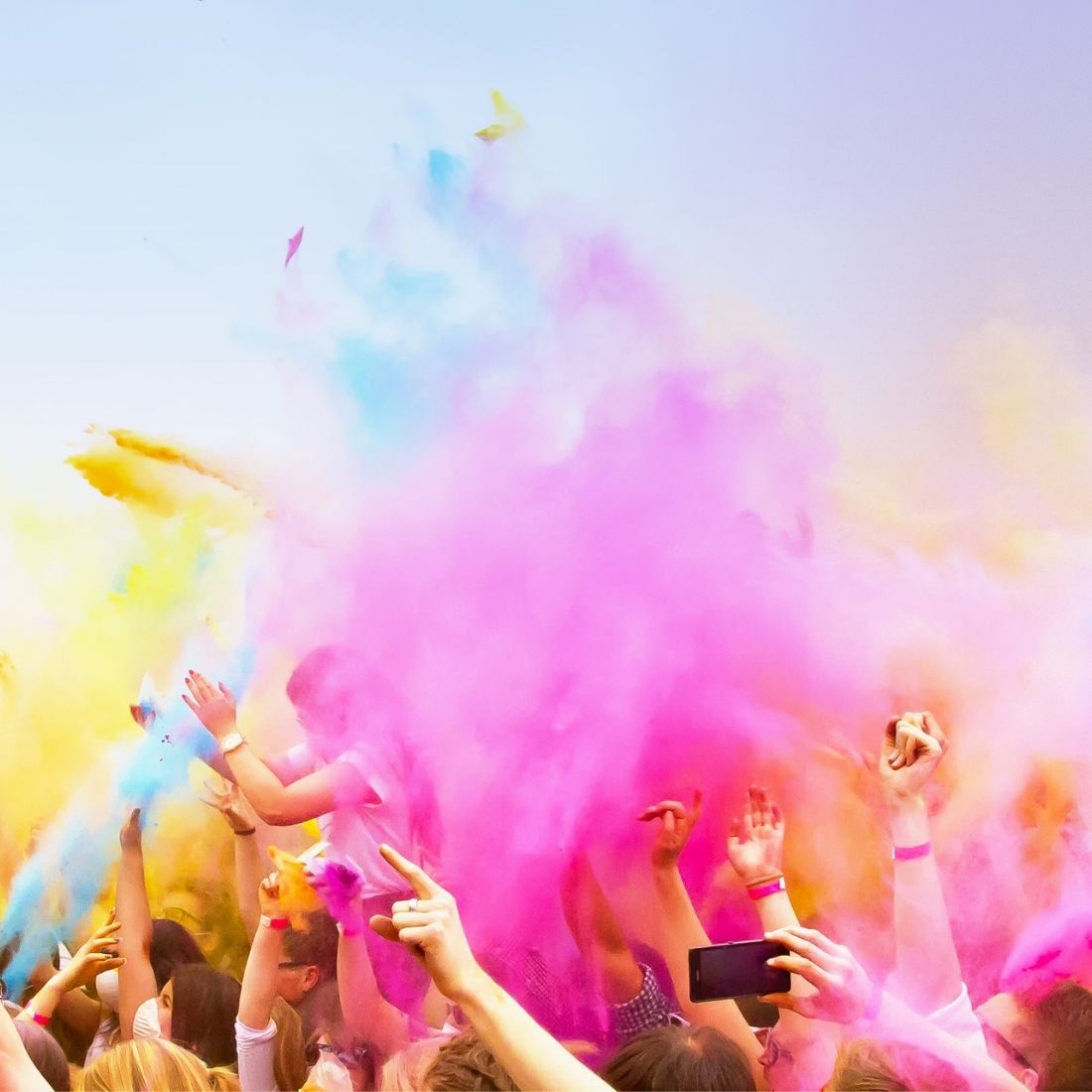The festival of colors, Holi, is celebrated during the Phalguna month as per the Hindu calendar. The festival started thousands of years ago when Holika tried to kill Prahalad, the son of the Multan king, Hiranyakashipu. However, when Holika got burned and Prahalad got saved, people celebrated the triumph of good over evil.
With great anticipation and gusto, Indians celebrate Holi each year. The sound of Indian chartbusters of Holi songs boom at each corner of the streets. Holi celebrations across India enable us to look at the various regional uniqueness, traditions, and facets of Indian cultures.
Celebration of Holi in Different States of India
Here is how Holi is celebrated in various parts of India –
Rang Panchami – Maharashtra and Madhya Pradesh
In Western India, especially in Maharashtra and Madhya Pradesh, Holi is informally known as Shimga or Rang Panchami. The celebrations start with Holika Dahan which is a common tradition of lighting a Holika firewood pyre. It takes place on the night before the start of the actual celebrations.
On the next morning, Rang Panchami is celebrated by playing Holi with dry and wet colors. The celebrations can go around for a week with various singing and dancing programs. People also gorge on a unique delicacy called 'PuranPoli'.
Lathmar Holi & Holi Milan – Uttar Pradesh
Uttar Pradesh is not only limited to being the largest state of India but also celebrates Holi in the most interesting way. Lathmar Holi, the local Bhojpuri name of Holi in Uttar Pradesh, is celebrated uniquely. Women get earned with canes and lathis to playfully hit the boys and men during the celebrations.
The men also come with a shield or dhal to protect themselves from the hits. The men who get caught during the play by women are made to dance on the streets wearing female attire. All these activities are done not aggressively but playfully.
Lathmar Holi is believed to have originated from Hindu Mythology. Legends claim that Lord Krishna playfully teased Radha in an attempt to celebrate Holi with her in Barsana, her village. During this attempt, the local women of the village got furious and chased Lord Krishna away with canes and lathis.
In Kanpur, the Holi celebrations last for up to seven days with a grand fair known as Grand Mela on the last day. In Gorakhpur, the festivities start with a pooja, and brotherhood is celebrated. Here Holi is known as 'Holi Milan' and people go over to each other's places and apply color to each other.
Holla Mohalla – Punjab
Going up further north, we find an interesting theme of Holi celebrations in Punjab. Holi is popularly known as Holla Mohalla in Punjab and is celebrated the day after the actual Holi.
Holi in Punjab is a celebration honoring the heroism of Sikh Warriors. The Holi celebrations are done primarily by the Nihang Sikhs, a particular sect in Punjab. The festivities include music, dancing, and traditional martial arts display.
Shigmo – Goa
Holi in Goa is a massive celebration of colors and spring. Here, Holi is popularly known as Shigmo. Farmers perform traditional folk songs and street dances. Tourists take part in the Shigmo celebrations with equal fervor and excitement.
Goa is primarily a coastal state with the main occupation of fishing. The boats of fishermen are decorated vibrantly with mythological and religious themes. You will also find various Shigmo Parades in various parts of Goa.
Here are two main customs of Holi celebrations – 'VhadloShigmo and DhaktoShigmo'. DhaktoShigmo is primarily celebrated by laborers and farmers in the rural region. However, everyone participates in the VhadloShigmo celebrations.

Royal Holi – Udaipur
As the name Royal Holi suggests, Holi is celebrated on a grand scale in Udaipur. Udaipur was the kingdom city of Mewar and to date, the traditional festivities are celebrated by the royal family of Mewar.
On Holi eve, the celebrations are started with the lighting of a bonfire. The celebrations are followed by a flamboyant parade of horses with royal bands.

Kumaoni Holi – Uttarakhand
The Kumaon locality of Uttarakhand celebrates Kumaoni Holi across several towns. The celebrations take place over several months and are more focused on musical affairs, unlike other states. Holi in Uttarakhand signifies the beginning of the sowing season for the farmers.
The celebrations start with the lighting of the Holika pyre popularly known as 'Cheer'. Holi in Uttarakhand is celebrated in three main forms —
Baithaki Holi: Here the locals showcase their talents in singing by throwing a musical performance using classical instruments. The songs have classical ragas with the correct blend of fun, melody, and spiritualism.
Khadi Holi: Men wear traditional garb and sing Holi songs using instruments like Hurka and Dhol.
Mahila Holi: This Holi celebration is dedicated to women in Uttarakhand.

ManjalKuli – Kerala
Kerala is known as God's own country. Here, Holi is known as Ukuli or ManjalKuli. The Konkani and Kudumbi communities of Kerala traditionally celebrate this festivity. The major color used in Kerala during the Holi is ManjalKuli or turmeric. The Holi celebrations here are quite peaceful and take place in a few temples.

Basant Utsav and Dol Jatra – West Bengal
West Bengal is not only famous for its sweets but also its Holi celebrations. Holi is locally known as Dol Jatra or Basant Utsav in West Bengal. Women usually dress up in yellow signifying the abundance of joy, goodness, and spring.
Shanti Niketan in Bolpur traditionally celebrates Holi. This quaint location depicts the cultural richness of Bengal. The Holi celebrations here are unmatched to date. You will also find many programs of traditional dance, song, and Tagore's poetry here.
Wrapping Up
Holi is celebrated with many flavors and festivities across India. This festival unites people all over India and celebrates brotherhood, victory, and good over evil. The several states of India provide a melting pot of varying traditions, cultures, and festivities during the Holi celebrations.

